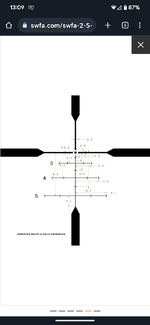- Banned
- #61
Newtosavage
WKR
Does dialing introduce more opportunity to expose a less reliable scope than a scope designed for holdover? Seems to me like it would.@Newtosavage I am waiting for client to show up to a meeting, so I might have time for a story from two weeks ago.
I show up to the range at our private club and there is a very irate man. So angry that he told me several times he would kick my ass.
After a few minutes of discussion I learned he was upset that his new Seekins 300prc setup was shooting poorly to the tune of it would have been a good thing for to wager I could outshoot him with my pistol.
He had shot close to three boxes of factory ammo and didn't want to share the range because he was "troubleshooting".
I suggested we switch the scope to one of the few I had in my gear box. I also suggested he shoot off bags instead of the lead sled he had ratchet strapped to the bench. (he said he brought that out after the first half of shots sucked, and then strapped it to the bench for the last handful...)
On went my vetted scope and he shot a small group then went home.
For me, the reliability part is paramount. When it is known that many 25+oz scopes cannot be reliable, my logic tells me that a 13oz scope from similar brands that is value priced won't be either. Oodles and oodles of folks would love to see that $450 13oz scope that is as reliable as sunrise come about. I don't have anything against 1" scopes at all, but just like @DangerRanger said above, there doesn't seem to be one that does what I value. If a company made a 6x Mil reticle 1" scope at 13oz, even with capped turrets, and it worked every time, I would buy one. For now, the closest thing is 7oz heavier.
Said another way, if someone prefers a ballistic reticle and holding over to dialing, can they expect the same amount of reliability from a less robust scope since they aren't screwing the adjustment dials all the time?


